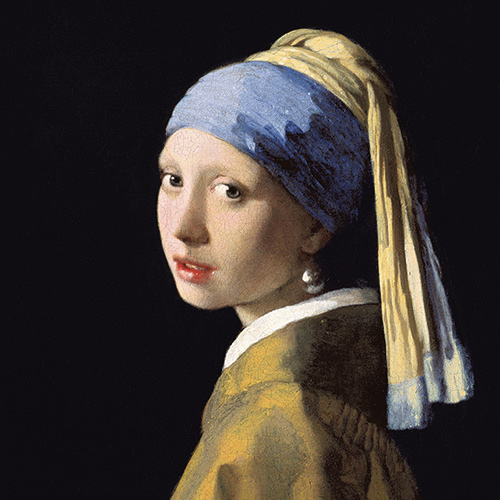
Girl with a Pearl Earring, 1665
The age of the Baroque coincides with the 17th century, one of the most transformational periods in European history. Despite the many variants of this style, its most salient features include emphasis on sensual richness, drama, movement, emotional exuberance, and a tendency to blur distinctions between the various arts.
These characteristics reflected important social and cultural developments. Most notable among them was the Counter-Reformation, or the response of the Catholic church to the threat of Protestantism. Another was the consolidation of monarchies, especially in countries like France and Spain, accompanied by a simultaneous growth of a powerful middle class in countries like Holland, which took on a new role in art patronage.
Finally, explorations around the globe and developments in science led to the expansion of intellectual horizons—as well as a new sense of doubt about the individual’s place in the larger world. Art historian Aneta Georgievska-Shine discusses the main currents of Baroque art in countries ranging from Italy and Spain to France and Holland.
10 –11 a.m. Social and Cultural Context
Situating the Baroque within the context of the political, philosophical, aesthetic, and scientific changes in 17th century Europe, this session provides an overview of its relationship to artistic antecedents, especially the Renaissance and Mannerism.
11:15 a.m.–12:15 p.m. The Growth of the Baroque in Italy
The Baroque style experienced a tremendous flourishing in Italy, especially because of the patronage of the Catholic church. One of the movement’s key figures is arguably Caravaggio, whose unconventional approach to sacred as well as secular subjects led to both early recognition and severe criticism. His impact on the art of painting is comparable to that of Gian Lorenzo Bernini in sculpture and architecture. Georgievska-Shine examines some of the best-known works of these artists, as well as those of their contemporaries.
12:15–12:45 p.m. Break
12:45–1:45 p.m. The Baroque in France and Spain
The spread of this movement beyond Italy was, in many ways, a result of increased travels of artists around the continent. The style of the greatest French painter of this period, Nicholas Poussin, was significantly impacted by his long stay in Italy. A similar influence can be seen in the works of the greatest painter of 17th-century Spain, Diego Velázquez. The session considers their works, as well as those of some of their most important contemporaries, from Giuseppe de Ribera to Claude Lorrain.
2–3 p.m. The Baroque in the Low Countries
Some of the most important artistic developments in 17th century Europe happened in the Low Countries—present-day Belgium and Holland. As a result of the religious rifts and conflicts of the period, the visual culture in these two realms followed radically different directions, exemplified by Catholic artists like Rubens and Van Dyck in Flanders, and Rembrandt and Vermeer in the Dutch Protestant Republic. Georgievska-Shine looks at the most important contributions of these artists, as well as their peers.
World Art History Certificate core course: Earn 1 credit*
General Information
*Enrolled participants in the World Art History Certificate Program receive 1 core course credit. Not yet enrolled? Learn about the program, its benefits, and how to register here.